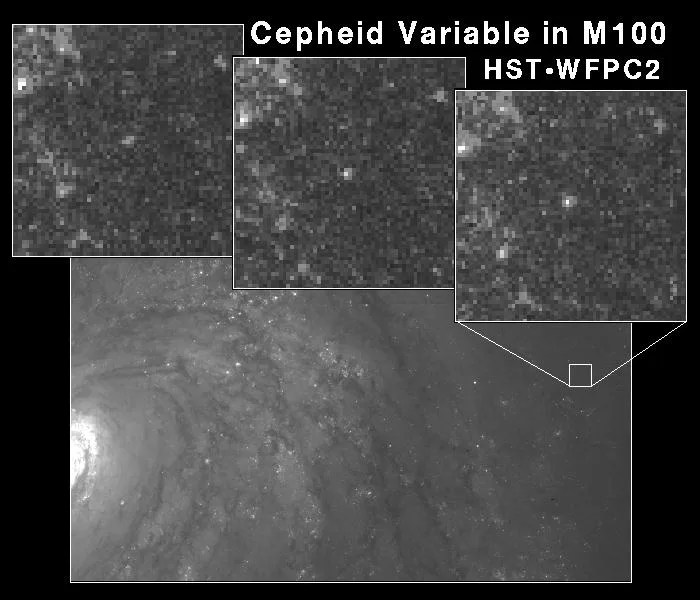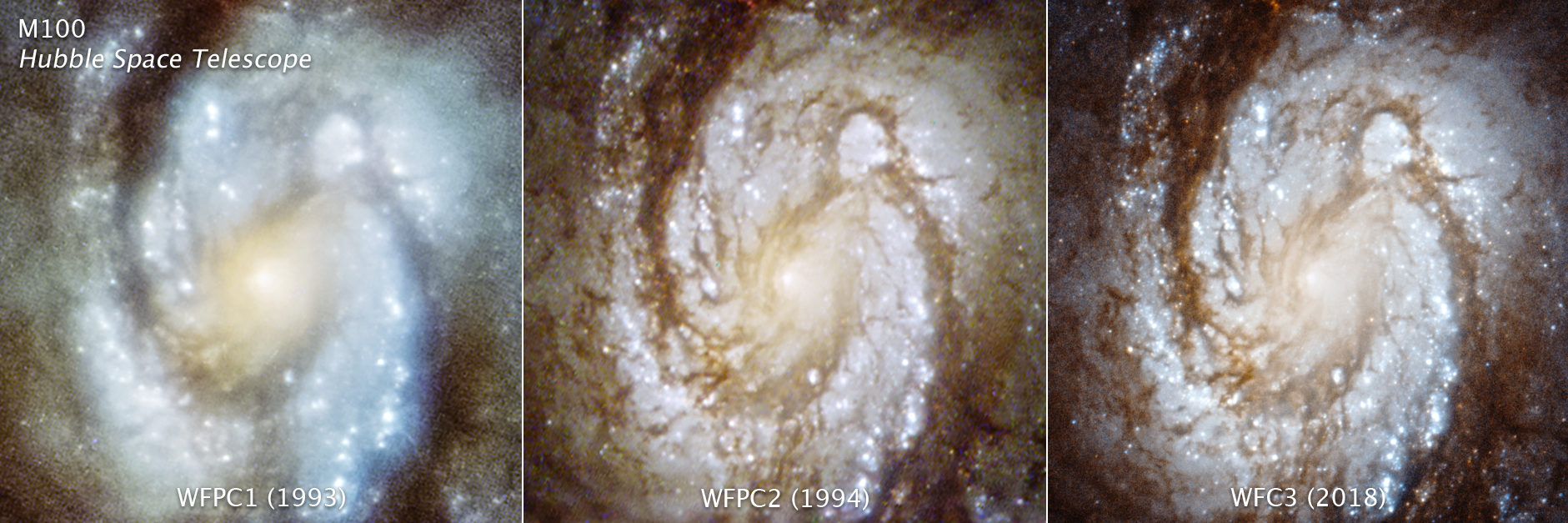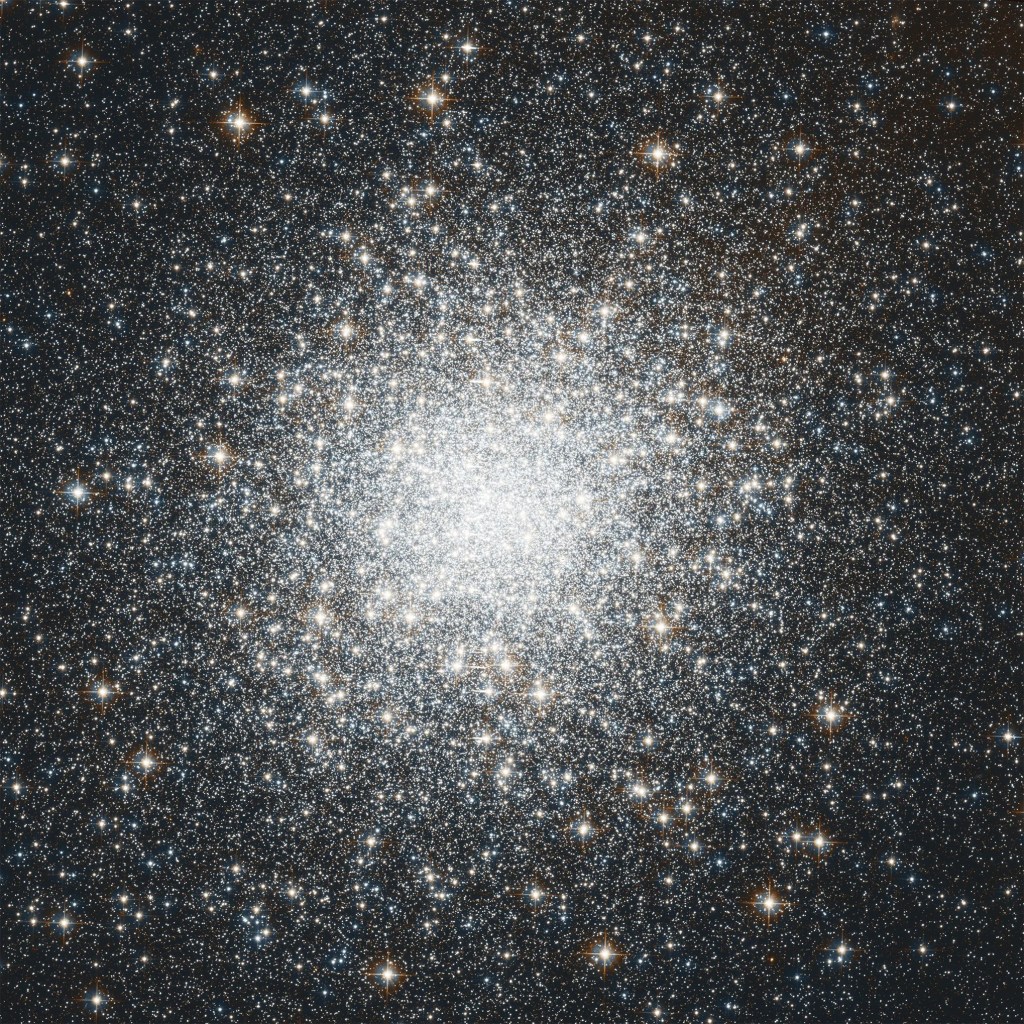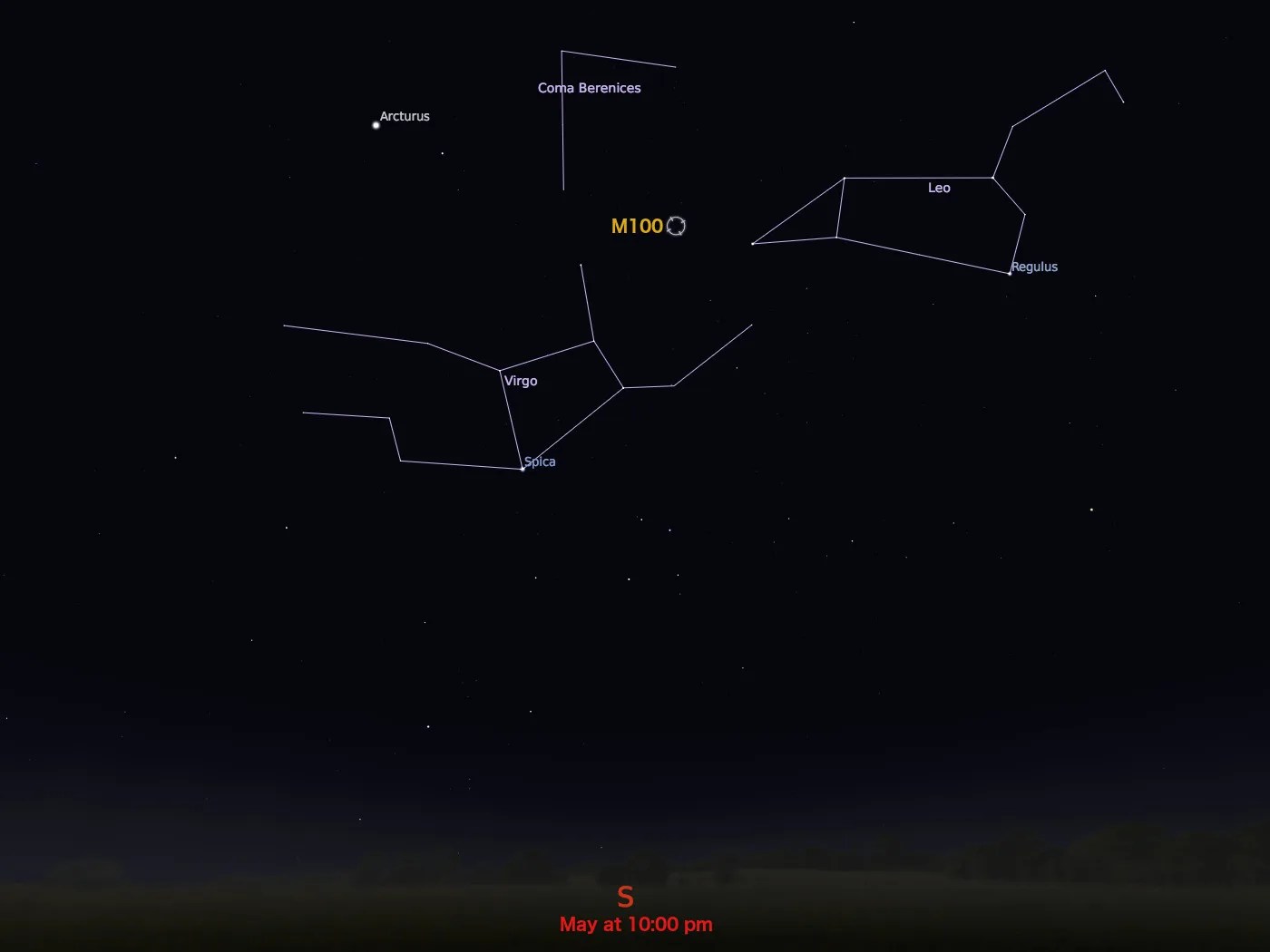Messier 100
This grand-design spiral galaxy offers a majestic view through larger backyard telescopes.
Distance
56 million light-years
Apparent Magnitude
10.1
constellation
Coma Berenices
object type
Spiral Galaxy
Messier 100 (M100) is a stunning example of a grand-design spiral galaxy. This detailed Hubble image reveals individual stars within the galaxy’s prominent spiral arms. These dusty structures swirl around the galaxy’s nucleus and are marked by a flurry of star formation. M100’s characteristic arms also host several small black holes, including the youngest one ever observed in our cosmic neighborhood.
The galaxy was discovered in 1781 by the French astronomer Pierre Méchain, Charles Messier’s fellow comet hunter who discovered eight comets in his lifetime. M100 is located 56 million light-years away from Earth and appears dim in the night sky. Its apparent magnitude of 10.1 means that, while it can be seen through small telescopes, it will appear only as a faint patch of light. Larger telescopes can resolve more details of this galaxy. M100 is located in the constellation Coma Berenices and is best observed during May.

This image above of M100 resolves individual stars within the majestic spiral arms. (These stars typically appeared blurred together when viewed with ground-based telescopes.) Hubble has the ability to resolve individual stars in other galaxies and measure accurately the light from very faint stars. This makes space telescope invaluable for identifying a rare class of pulsating stars, called Cepheid Variable stars embedded within M100's spiral arms. Cepheids are reliable cosmic distance mileposts. The interval it takes for the Cepheid to complete one pulsation is a direct indication of the stars's intrinsic brightness. This value can be used to make a precise measurement of the galaxy's distance, which turns out to be 56 million light-years.

M100 is a rotating system of gas and stars, similar to our own galaxy, the Milky Way. Hubble routinely can view M100 with a level of clarity and sensitivity previously possible only for the very few nearby galaxies that compose our Local Group of galaxies. M100 is a member of the huge Virgo cluster of an estimated 2,500 galaxies. The galaxy can be seen by amateur astronomers as a faint, pinwheel-shaped object in the spring constellation Coma Berenices.

For more information about Hubble’s observations of M100, see:
- Celebratory Galaxy Photo Honors 25th Anniversary of NASA's First Hubble Servicing Mission
- The Spiral Galaxy M100 as Seen with Hubble's Improved Vision
- Hubble Space Telescope Measures Precise Distance to the Most Remote Galaxy Yet
- Galaxy M100 Resolution Comparison
- Picture Perfect: Hubble's New Improved Optics Probe the Core of a Distant Galaxy
- Core of Messier 100 in Super High Res
Explore Hubble's Messier Catalog
The following pages contain some of Hubble’s best images of Messier objects.

Overview The Messier catalog, begun by astronomer Charles Messier in the 18th Century and revised over the years, includes some…

Better known as the Crab Nebula, Charles Messier originally mistook Messier 1 for Halley’s Comet, which inspired him to create…

Hubble's image of Messier 2 is comprised of visible and infrared wavelengths of light.






























